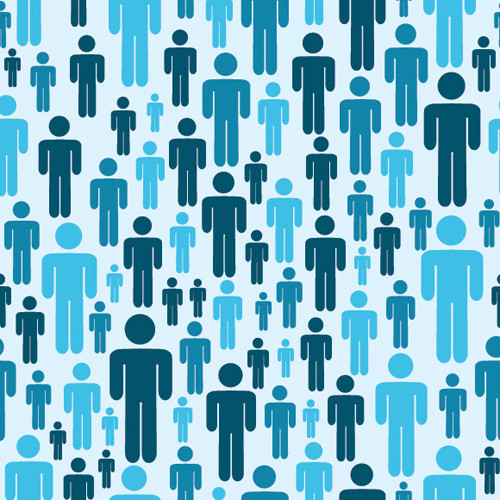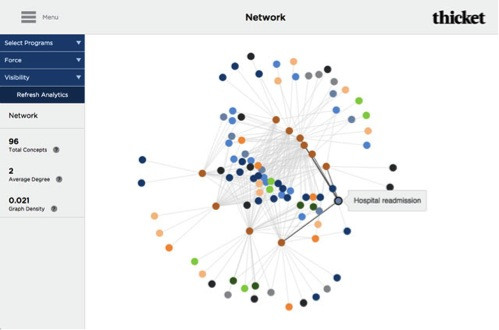Too often, the process of building shared knowledge excludes the very people expected to act on that knowledge. Many scientific studies treat people as subjects, rather than participants. Resulting discoveries are locked away from the public—in technical jargon, expensive journals, customized software, and patented procedures. As a result, communities have become increasingly uninformed and unwilling to participate in science.
Another roadblock to community-based work is the fact that it is becoming harder to establish common understanding as the world becomes more interconnected. Culture, socioeconomic class, and lived experience all contribute to divergent perspectives that impede alignment on priorities and decisions.

We can re-engage people in the process of discovery, but we must rebuild trust and find common understanding. When we design collaborations in a truly inclusive manner, trust and alignment are natural outcomes. Researchers and practitioners must work with communities to establish common goals, transparent practices, and shared criteria for evaluation.
Here, I suggest tools for building inclusive, community-driven programs through the establishment of shared frameworks, the use of process-based collaborations, and new ways of framing and analyzing data. Many of these suggestions come from human-centered design, organizational theory, or systems design.
Establishing Shared Frameworks
A shared framework helps clarify how everyone involved sees pathways to change and the criteria for how an evaluation might assess those changes. Participatory activities engage people from different backgrounds and disciplines to establish common understanding of complex factors, and hence a shared framework. The following activities facilitate productive group discussions that align rather than fragment.
- Cognitive maps are simple visuals documenting an individual’s thought process about a topic or system; they use lines and arrows to show how concepts relate to each other. Comparing cognitive maps can identify points of alignment and divergence within groups of people. Examples of cognitive maps include process, system, and stakeholder maps, often used in strategic planning.
- Card sorting is an activity to design taxonomies for large amounts of information. An individual or group document categories that make up a complex system on index cards, using one card per category. They then spread them out on a table and organize them into different classification systems. Website designers use card sorting to organize information for multiple audiences; it can also facilitate the design of an intervention.
- Ranking and prioritization activities can help align people around decisions. They require participants to prioritize competing alternatives and explain their choices. Human-centered designers use these activities to bring diverse stakeholders toward agreement.
Process-Based Collaborations
Scientists and designers share an open secret: A strong process is a critical element of success in both research and development programs. Whether building shared knowledge using the scientific method or by designing a new program using human-centered design, the steps are very similar. Prioritizing process over outputs can positively affect productivity, creativity, and social cohesion.
- Hackathons are intensive events where small teams brainstorm and prototype technology-based solutions around a theme. The constraints of having to work fast in deep collaboration can bond teams that might never become tight-knit under more relaxed conditions. They can also produce solutions that surpass typical levels of creative innovation. Health care organizations have used hackathons to break down cultural boundaries between health care professionals and technology developers.
- Social innovation labs don’t impose the strict time constraints of hackathons, but they also convene small teams to rapidly prototype and pressure-test solutions for real-world problems. Typically a week or longer, social innovation labs encourage a systems view to create social cohesion among diverse groups, and have addressed problems such as literacy and youth unemployment.
Finding New Ways to Frame and Analyze Data
 Network maps organize complex sets of data and examine factors like influence within a network. (Photo courtesy of Thicket Labs)
Network maps organize complex sets of data and examine factors like influence within a network. (Photo courtesy of Thicket Labs)
We have generated much of the world’s data in just the last few years. But big data is no cure-all. We must leverage emerging tools to make sense of all this information, particularly if we want our evaluations to account for multiple factors impacting at once, as in complex systems. The tools below help frame and analyze big data.
- Infographics are everywhere today because they combine two powerful tools for sharing information: visuals and storytelling. Research tells us that visuals help people glean more information at a glance. And contextualizing data through stories that connect insights to their real-world utility helps people make sense of data more readily.
- Network analysis is a new way to distill large datasets for easier analysis, resulting in what’s called a network map. Network maps add new dimensions to our traditional analysis of data by representing the influence of multiple factors on each other. One example application is how social network analysis has visualized the spread of loneliness through social networks.
- Simulations are network maps turned into dynamic models. By setting hypothetical scenarios, it’s possible to test how systems behave and hence identify meaningful patters. Simulations can help validate hypotheses quickly and cost-effectively before moving on to more-costly trials in the real world. Simulations are used regularly in behavior research.
The tools presented here can help reduce roadblocks resulting from differing agendas, slow processes, and poor communication. We can and should make our decision-making more inclusive.
Support SSIR’s coverage of cross-sector solutions to global challenges.
Help us further the reach of innovative ideas. Donate today.
Read more stories by Deepthi Welaratna.

